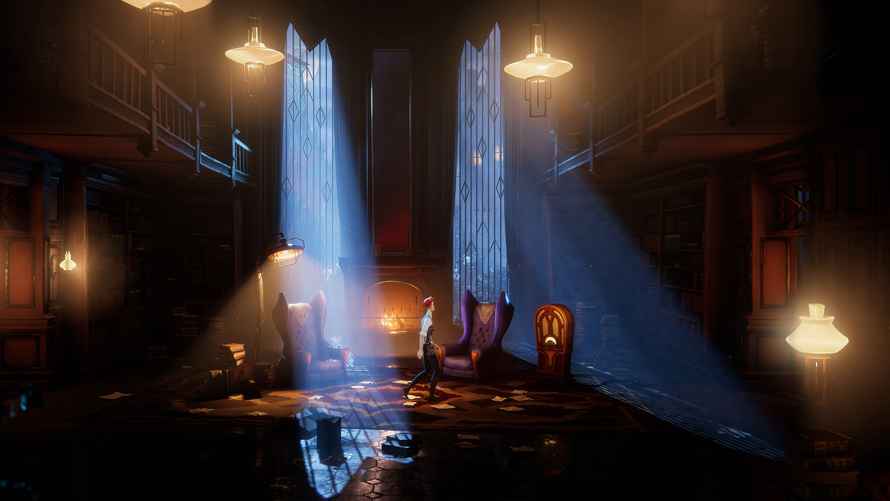The Last Case of Benedict Fox Review
With so many Metroidvania-style games flooding the market, a developer needs a strong hook or their game has no chance of standing out from the densely populated pack. When I first saw the trailer for Plot Twist’s The Last Case of Benedict Fox, I loved its art direction. But does the game as a whole match up to its unique look?
The Fox Detective Agency
The Last Case of Benedict Fox is not simply a 2.5D Metroidvania, but folds in puzzles and a bit of Lovecraft-inspired horror. You play as Benedict Fox, an amateur detective of sorts, tasked with solving the murder of his father in the family mansion. You have a demon companion that can help you warp between real life and limbo, a sort of representation of your father’s memories and psychological states. The supernatural realm is also where Benedict fights most of the game’s few enemy types.
The game cleverly asks Benedict to travel between the real world and limbo to help piece together what happened to his father. Because the supernatural realm is a nightmare version of the real-world mansion, it allows Benedict to find clues and access areas that are blocked outside of limbo. The game has a lot of puzzles, and these range from relatively simple to very obtuse. There are lots of different kinds, too, including rhythm games, chess puzzles, encryption brain teasers, and many more. Recognizing that some players are coming to Benedict Fox for platforming and combat, there are ways to tweak the difficulty of the puzzles, including letting the game auto-solve them.

The narrative moving everything along is pretty obtuse and I won’t pretend to understand all of it. Nor will I spoil it, in large part because unraveling the story is at the heart of the game, but it does ambitiously deal with all sorts of inner demons, disturbing psychological states, and the relationship of Benedict to his father.
Blocked Paths, Locked Doors, and Creatures in the Shadows
If The Last Case of Benedict Fox was just a puzzle game, it would be a beautifully intriguing one. But the game’s puzzles are embedded in a Metroidvania, so there are all sorts of combat and platforming mechanics. Unfortunately, these are a mixed bag.
I’ll admit it. I’m not usually fond of platformers, mostly because I rarely click with the rhythm and timing. Some games, though, have stellar or forgiving mechanics that allow even me to feel successful. Benedict Fox is not one of those games. Jumping is often sluggish and imprecise and double jumps require using demonic tentacles to grab glowing anchor points like a grappling hook. Like the tentacles themselves, the mechanic failed to grab me.

Combat fares a little better. Benedict starts with a knife for melee attacks and a flare gun for distance shooting. Both can be upgraded throughout the game, and Benedict’s demonic ally can grow in power, too. A mysterious tattoo artist upgrades the demon powers through the use of inky currency collected from enemies. Benedict’s weapons and powers are fine, but the enemies themselves come in only a few flavors. Often the best tactic is to avoid them. Those players hoping for engaging boss battles should look elsewhere.
Lost in Translation
In part, Benedict Fox is designed to confound through puzzles and the environment. While there is a map, there is no minimap overlay, requiring constant back-and-forth to the map screen and a lot of getting lost. There are some tools to help with exploring, like highlighted doors, passages, and puzzle clues. I wish there were objective markers or some sort of signposts.
Almost without exception, The Last Case of Benedict Fox shines in its art direction. The saturated, stylized characters and environments work well. The contrast between the mansion and the inky, distorted limbo world is effective. The visuals are what piqued my interest, and honestly, what kept me playing.

The Last Case of Benedict Fox marries beautiful art and some excellent puzzles to a confounding narrative and sometimes frustrating mechanics. Had it been a pure adventure puzzle game it might have fared better. The game’s platforming and combat are unrefined elements in an otherwise intriguing conception.
***PC code provided by the publisher for review***
The Good
- Beautiful art
- Interesting narrative mechanics
- Some excellent puzzles
The Bad
- Frustrating controls
- Imprecise platforming
- Enemy variety, few bosses
